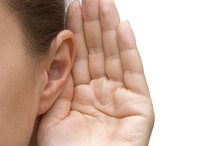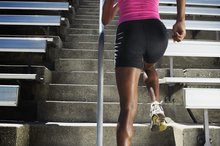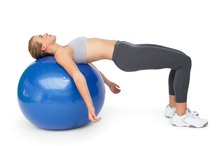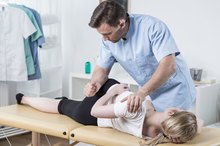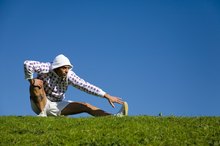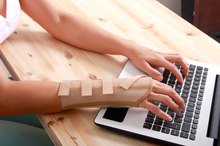What Are the Names of the Muscles in the Arm & Shoulder?
Your arm and shoulder contain many different muscles that allow you to perform daily activities. Showering, getting dressed, driving, lifting, carrying and sports activities all require these muscles to function together to coordinate movement of your shoulder, elbow and wrist.
Deltoid
Your shoulder is a ball-and-socket joint with many muscle attachments that allow it to move in every direction. The deltoid muscle has three components -- anterior, middle and posterior. Together, these muscle components form a cap over the top of the shoulder. The anterior deltoid lifts your arm forward, the middle deltoid lifts your arm out to the side and the posterior deltoid moves your arm backward.
- Your shoulder is a ball-and-socket joint with many muscle attachments that allow it to move in every direction.
Rotator Cuff Muscles
What Are the Functions of the Muscles That Move the Ears?
Learn More
The rotator cuff consists of four muscles -- supraspinatus, infraspinatus, teres minor and subscapularis -- that originate on your shoulder blade and attach to your upper arm bone. Together, these muscles keep the ball of your upper arm bone in the socket as you move your shoulder. The supraspinatus lifts your arm out to the side. The infraspinatus and teres minor muscles rotate your arm outward, and the subscapularis muscle rotates your arm inward.
- The rotator cuff consists of four muscles -- supraspinatus, infraspinatus, teres minor and subscapularis -- that originate on your shoulder blade and attach to your upper arm bone.
- The infraspinatus and teres minor muscles rotate your arm outward, and the subscapularis muscle rotates your arm inward.
Other Shoulder Muscles
The pectoralis muscles -- major and minor -- attach your ribs to the front of your upper arm. These muscles lift your arm forward, bring it in toward your body and rotate your shoulder inward. The coracobrachialis is a deep muscle on the front of your upper arm that moves your arm forward. The latissimus dorsi is a large muscle that originates along your middle and lower spine and attaches to the back of your upper arm. This muscle moves your arm backward, brings it in toward your body and rotates it inward. The teres major is a small muscle that attaches your shoulder blade to the back of your upper arm. This muscle also moves your arm backward, brings it in toward your body and rotates it inward.
- The pectoralis muscles -- major and minor -- attach your ribs to the front of your upper arm.
- The coracobrachialis is a deep muscle on the front of your upper arm that moves your arm forward.
Upper Arm Muscles
Muscles Involved in Hip Flexion
Learn More
Two main muscle groups are located in your upper arm. On the front of your upper arm, the biceps brachii, brachialis and brachioradialis muscles bend your elbow. The biceps brachii also rotates your forearm into a palm-up position. The triceps brachii and anconeus muscles on the back of your upper arm straighten your elbow.
- Two main muscle groups are located in your upper arm.
- On the front of your upper arm, the biceps brachii, brachialis and brachioradialis muscles bend your elbow.
Wrist Extensors
A group of muscles along the back of your forearm are collectively called forearm extensors -- extensor carpi radialis longus and brevis, extensor carpi ulnaris, extensor digitorum, extensor digiti minimi, extensor pollicis longus and brevis and extensor indicis. These muscles bend your wrist backward and straighten your fingers. The abductor pollicis longus, which moves your thumb out to the side, is also located on the back of your forearm.
Wrist Flexors
The wrist flexors are a group of muscles located on the front of your forearm. These include flexor carpi radilais, flexor carpi ulnaris, flexor digitorum superficialis, flexor digitorum profundus, flexor pollicis longus and palmaris longus. These muscles bend your wrist forward and bend your fingers.
Other Forearm Muscles
The pronator teres, pronator quadratus and supinator muscles are also located in your forearm. The pronator muscles rotate your forearm into a palm-down position, while the supinator rotates your forearm in the opposite direction.
Related Articles
References
Writer Bio
Aubrey Bailey has been writing health-related articles since 2009. Her articles have appeared in ADVANCE for Physical Therapy & Rehab Medicine. She holds a Bachelor of Science in physical therapy and Bachelor of Arts in psychology from the University at Buffalo, as well as a post-professional Doctor of Physical Therapy from Utica College. Dr. Bailey is also a certified hand therapist.
